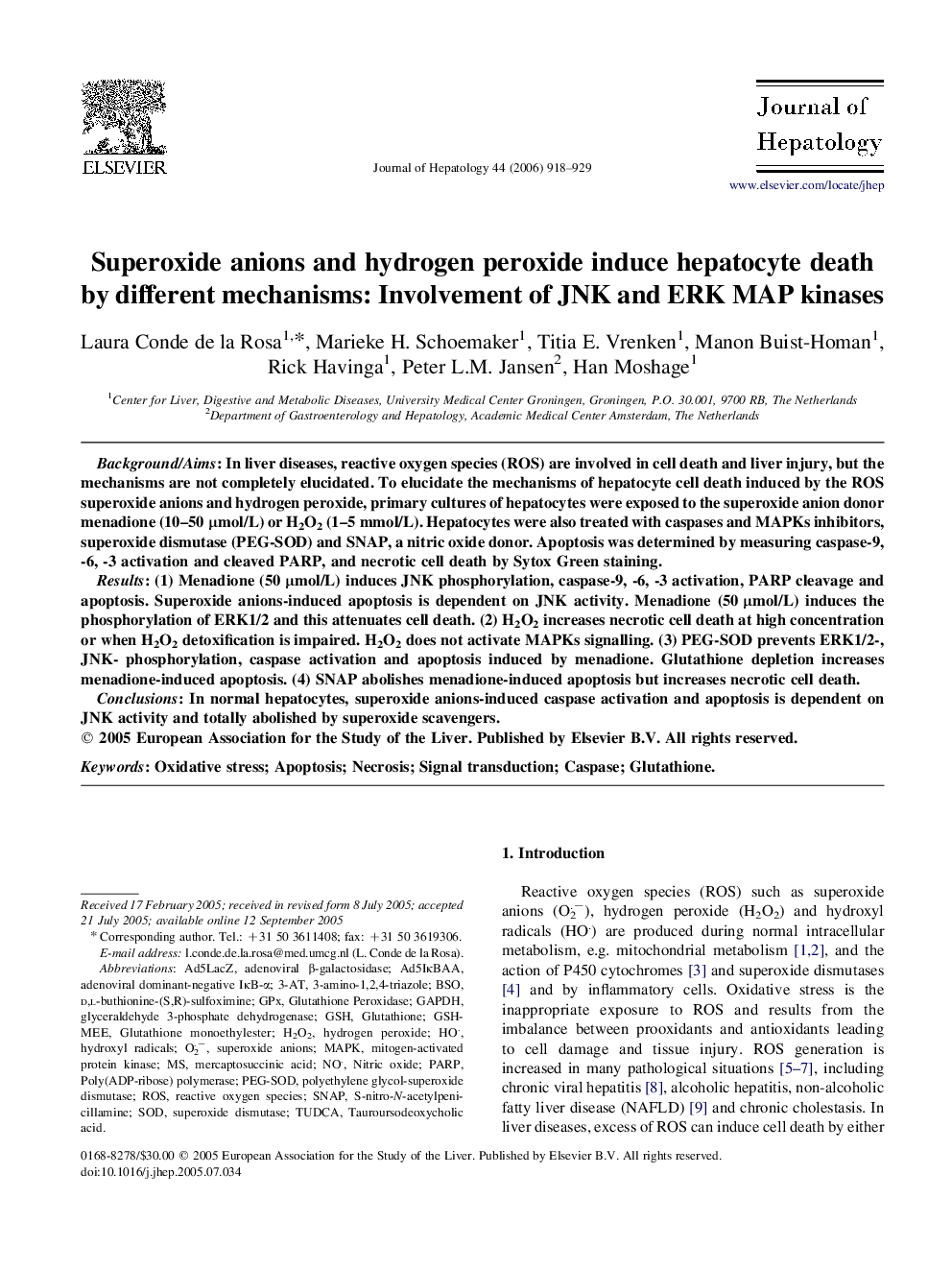| Article ID | Journal | Published Year | Pages | File Type |
|---|---|---|---|---|
| 3314944 | Journal of Hepatology | 2006 | 12 Pages |
Background/AimsIn liver diseases, reactive oxygen species (ROS) are involved in cell death and liver injury, but the mechanisms are not completely elucidated. To elucidate the mechanisms of hepatocyte cell death induced by the ROS superoxide anions and hydrogen peroxide, primary cultures of hepatocytes were exposed to the superoxide anion donor menadione (10–50 μmol/L) or H2O2 (1–5 mmol/L). Hepatocytes were also treated with caspases and MAPKs inhibitors, superoxide dismutase (PEG-SOD) and SNAP, a nitric oxide donor. Apoptosis was determined by measuring caspase-9, -6, -3 activation and cleaved PARP, and necrotic cell death by Sytox Green staining.Results(1) Menadione (50 μmol/L) induces JNK phosphorylation, caspase-9, -6, -3 activation, PARP cleavage and apoptosis. Superoxide anions-induced apoptosis is dependent on JNK activity. Menadione (50 μmol/L) induces the phosphorylation of ERK1/2 and this attenuates cell death. (2) H2O2 increases necrotic cell death at high concentration or when H2O2 detoxification is impaired. H2O2 does not activate MAPKs signalling. (3) PEG-SOD prevents ERK1/2-, JNK- phosphorylation, caspase activation and apoptosis induced by menadione. Glutathione depletion increases menadione-induced apoptosis. (4) SNAP abolishes menadione-induced apoptosis but increases necrotic cell death.ConclusionsIn normal hepatocytes, superoxide anions-induced caspase activation and apoptosis is dependent on JNK activity and totally abolished by superoxide scavengers.
